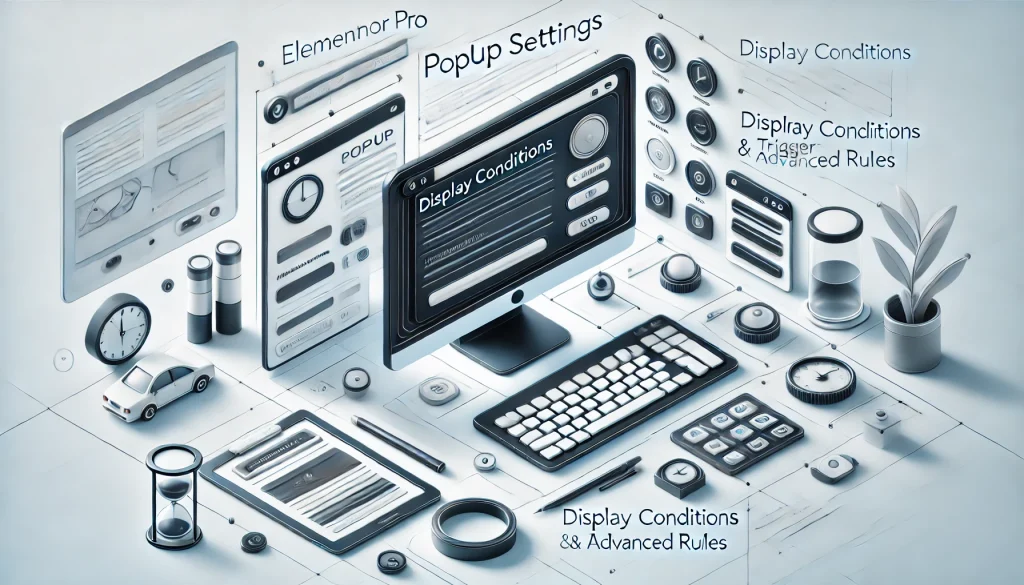Introduction
Welcome to our comprehensive guide on Elementor Pro Popup Settings. In this guide, we’ll delve into the various options available in Elementor Pro for creating and managing popups on your website. Understanding these settings is crucial for web designers and marketers looking to enhance user engagement and conversion rates. We’ll explore Display Conditions, Triggers, and Advanced Rules, providing you with the knowledge to effectively implement these features in your web design projects.
Display Conditions
Display Conditions control where your popup will be displayed on your website. Here are the available options:
- Entire Site: Displays the popup across your entire website.
- Singular: Targets specific pages or posts for displaying the popup.
- Archives: Use for archive pages, like categories, tags, and author pages.
- Front Page: Shows the popup on the front/home page of your website.
- 404 Page: Display the popup on 404 Not Found error pages.
- Search Results: Triggers the popup on search result pages.
- WooCommerce: For WooCommerce sites, to target products, categories, or shop pages.
Triggers
Triggers define when the popup appears based on user actions or behaviors.
- On Page Load: Displays the popup as soon as the page loads.
- On Scroll: Triggers the popup when the user scrolls a certain percentage down the page.
- On Scroll to Element: Activates the popup when the user scrolls to a specific element.
- On Click: Shows the popup when a user clicks on a specific element.
- After Inactivity: Displays the popup after the user has been inactive for a set period.
- On Page Exit Intent: Detects when a user is about to leave the page and displays the popup.
Advanced Rules
Advanced Rules further refine when and how your popups are displayed.
- Show After X Page Views: Displays the popup after the user has viewed a certain number of pages.
- Show After X Sessions: Triggers the popup after the user has visited your site a specific number of sessions.
- Show up to X times per session: Limits how many times the popup is shown in a single session.
- Show Between Dates: Schedule the popup to display only between certain dates.
- Show on Devices: Choose to display the popup on desktop, tablet, and/or mobile devices.
- When Arriving From: Triggers the popup based on the referrer, such as specific URLs or search engines.
Conclusion
In conclusion, Elementor Pro’s popup settings offer a powerful toolkit for enhancing user interaction and engagement on your website. By mastering Display Conditions, Triggers, and Advanced Rules, you can create targeted, effective popups that cater to specific audience behaviors and needs. Whether you’re aiming to increase conversions, capture leads, or provide valuable information, these settings enable a high level of customization and precision. Remember, the key to successful popup implementation is balancing user experience with your marketing goals, ensuring that your popups are both effective and user-friendly.

